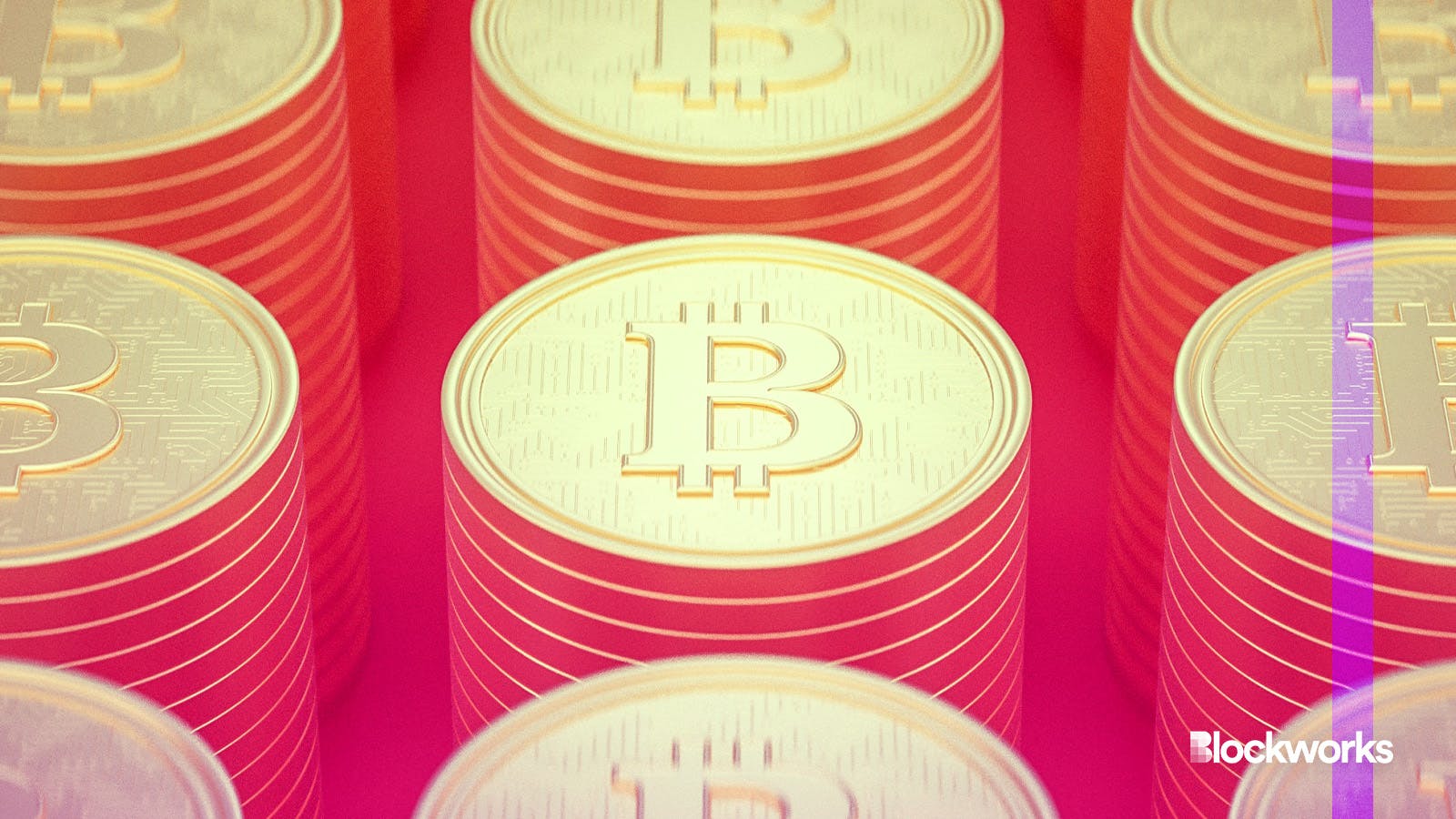Ethereum won’t flip Bitcoin anytime soon, but Ordinals could change that
Ethereum is big. But it’s not Bitcoin big — yet

愚木混株 cdd20/Shutterstock modified by Blockworks
Bitcoin block space looks set to be the hottest commodity in crypto.
Bitcoin once again occupies more than half the entire crypto market, having outperformed ether by nearly double so far in 2023. Now, the long-prophesied “flippening” of ether over bitcoin is even further in the future.
The market currently values Bitcoin three times higher than Ethereum. Bitcoin’s market cap, at $727 billion, has swelled by $400 billion in 2023 — a figure bigger than Mastercard’s entire stock valuation and about twice that of Netflix’s.
Ethereum’s valuation has grown by $100 billion, jumping from under $145 billion in January to nearly $245 billion today.
Some anticipate that Ethereum’s market cap will one day eclipse Bitcoin’s, despite the latter’s half-decade head start.
Things were looking good coming out of the 2019 bear market and into 2021’s explosive bull cycle. DeFi summer and NFT mania boosted interest in Ethereum, at times driving up fees for certain actions beyond $250.
- Bitcoin‘s market value was 925% of Ethereum’s — $130 billion to $14 billion — at the end of 2019 (bottom of the bear market).
- That figure had shrunk to under 200% by the end of 2021 (peak bull market).
- Bitcoin’s market value is now 300% of Ethereum’s.
The case for flippening has recently taken a hit by a different flip: The Bitcoin network now rakes in more fees than Ethereum for the first time since December 2020.
Over the past four days, Bitcoin users have paid miners about $40 million to have their transactions processed.
Ethereum users, meanwhile, forked out less than $27 million ether (most of those fees have been burned, slightly reducing Ethereum’s overall supply).
Layer-2 Ethereum networks Arbitrum and Optimism haven’t bridged that gap as they each generate less than $200,000 in fees per day right now.
The fee-flippening (flee-pening?) is awkward when you consider the sheer amount of use cases supported by Ethereum. Decentralized exchanges, DAOs, memecoins, NFTs, stablecoins, DeFi and GameFi all run atop Ethereum.
Read more: Ethereum’s Justin Drake is unconcerned despite ether’s middling year pricewise: Q&A
Bitcoin, on the other hand, had for the longest time mostly had one application — bitcoin transactions. But the rate of on-chain transactions had until recently sustained very little growth since 2015. Perhaps due to its “digital gold” narrative and the rising ubiquity of alternative cryptocurrencies.
All that changed with Ordinals — a protocol for inscribing individual units of bitcoin (BTC) with unique data to create digital collectibles, first launched in January.
Music, text, art, video and even code for browser-based DOOM clones have since been inscribed to Bitcoin, resulting in an on-chain collectibles market worth thousands of BTC. Bitcoin users trade Ordinals as Ethereum or Solana users would trade NFTs.
Today, anywhere from around a third to one half of Bitcoin transactions contain Ordinals, driving up demand for blockspace as well as transaction fees. At times today, “medium priority” transactions went for around $11 compared to around $2.30 for the same on Ethereum (more priority generally means faster processing), although those prices have since come down.
So is Bitcoin netting more fees than Ethereum good for Bitcoin? Maybe not.
Some Bitcoin insiders worry the network isn’t properly equipped to handle Ordinals and potential influxes of interest in its original use case, BTC payments.
The CryptoKitties incident in December 2017 — during which a NFT game grew so popular that it spectacularly clogged Ethereum — first showed that Ethereum probably couldn’t handle serving as the “World Computer” just yet.
Then, the 2021 bull market saw NFT mint costs soar to $250 at times — a reminder of how necessary it was to port activity to smaller chains, including rollups. Still, memecoins and low quality token projects ratcheted up fees beyond $20 earlier this year, drastically reducing Ethereum’s usefulness for non-critical tasks.
The NFT craze of 2021 made Ethereum block space the hottest commodity in crypto. Even while tanking its utility.
Ordinals may end up having the same effect on Bitcoin, especially if demand keeps up and the bull market truly hits.
At that point, it would seem reasonable to value Bitcoin and Ethereum more similarly. It might just take another run.
Updated Nov. 16, 2023 at 4:25 pm ET: Corrected reference to percentages in bullet points.
Start your day with top crypto insights from David Canellis and Katherine Ross. Subscribe to the Empire newsletter.





